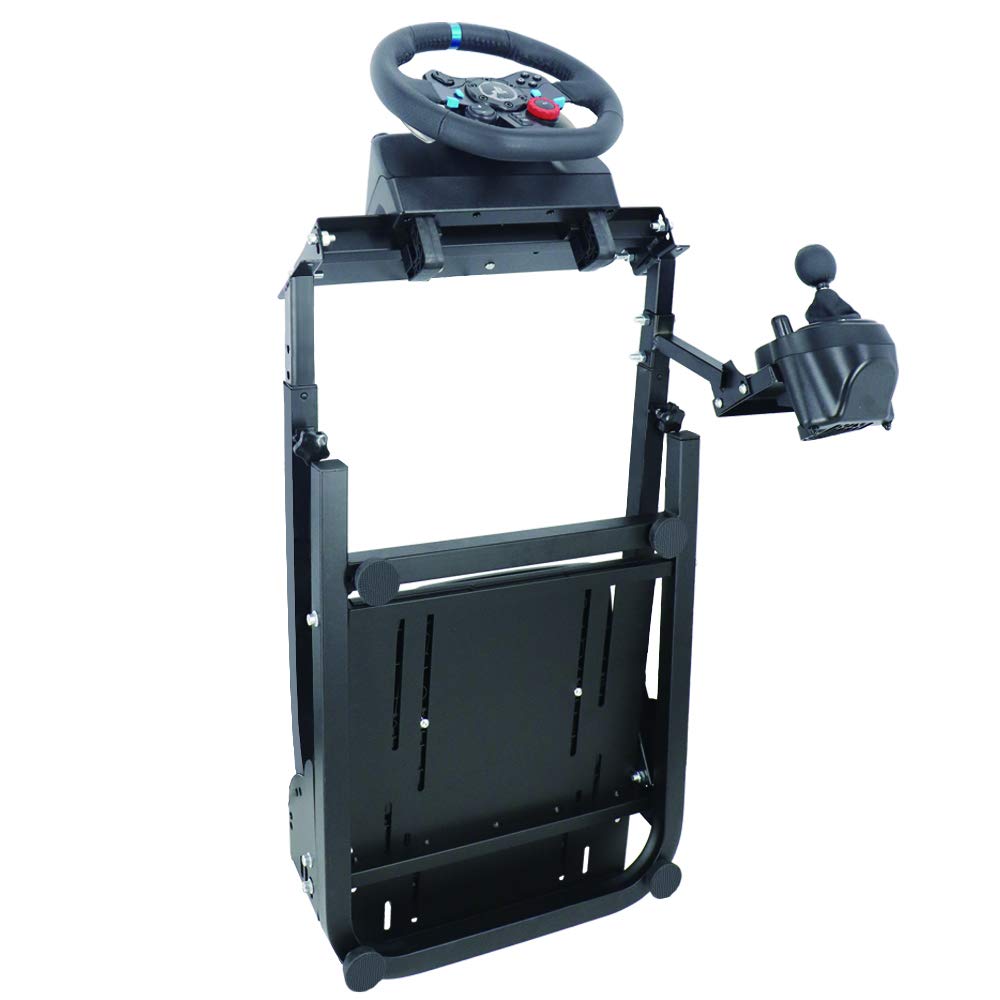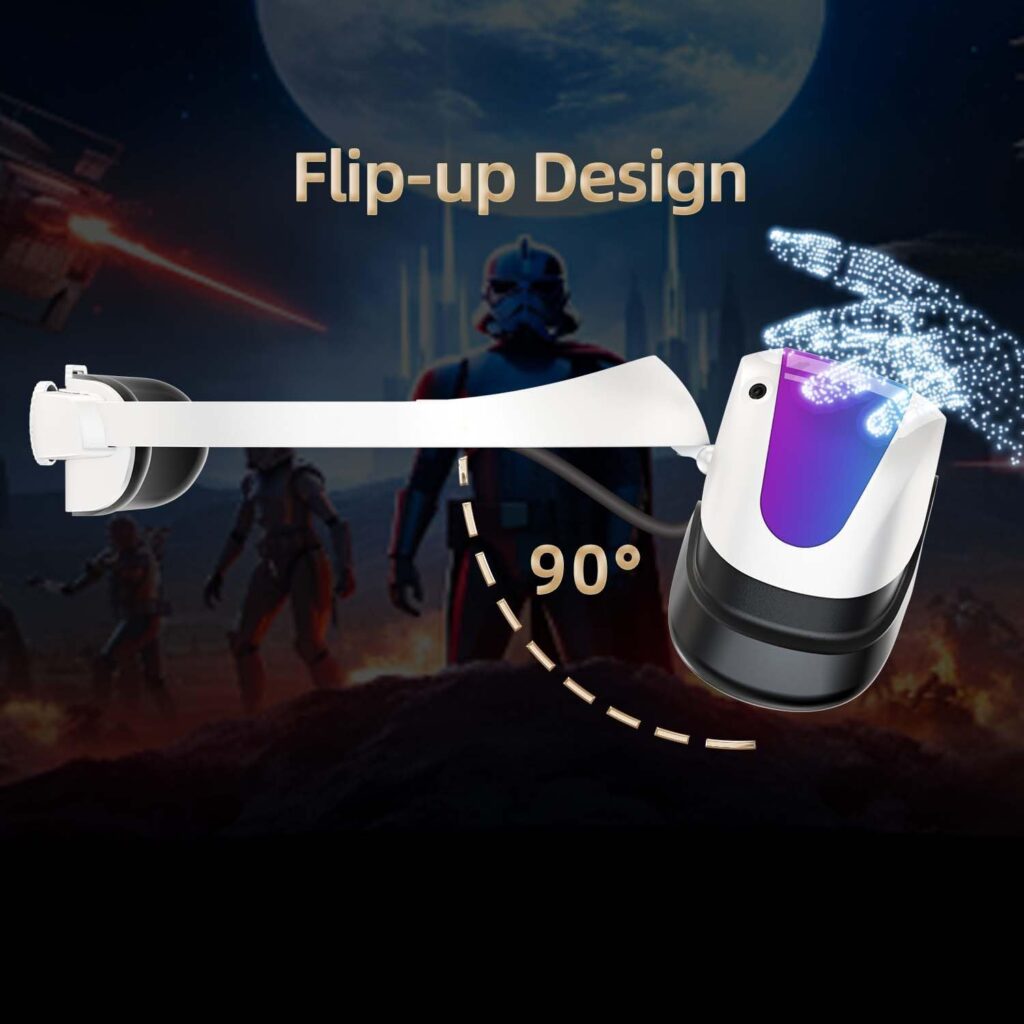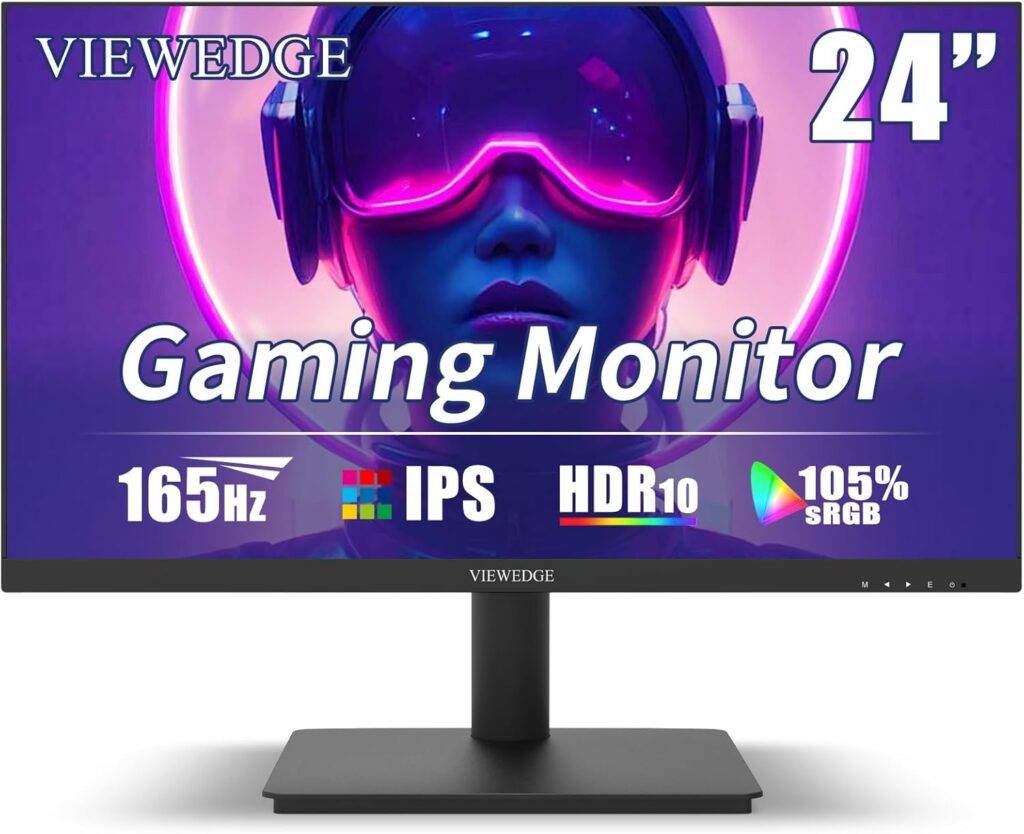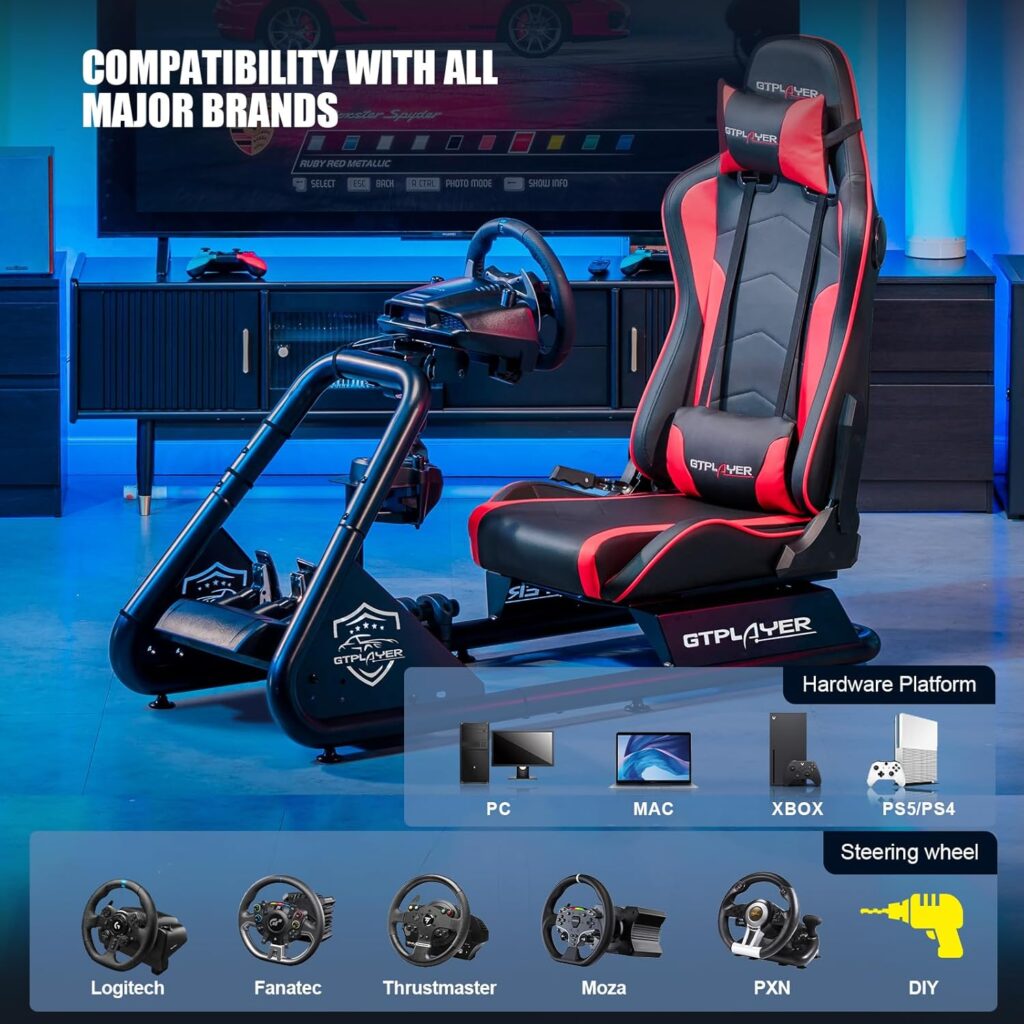Coincidentally, you find yourself dominating the virtual racetracks, consistently outpacing your opponents and setting impressive lap times in the world of sim racing.
Now, you wonder if your success in the virtual realm can translate into the real world of racing. Can you take your skills from sim racing and compete with real cars on actual tracks?
The answer is not so straightforward, but there's a chance you might just have what it takes.
Key Takeaways
- Sim racing can teach track familiarity and proper cornering, improving car control and handling skills.
- Sim racing helps develop racecraft skills and allows for mistake management and learning.
- Transitioning from sim racing to real racing requires physical commitment, adaptability, and handling pressure and stress.
- Steps to take if you want to race real cars include gaining practical driving experience, attending racing schools, participating in amateur events, seeking sponsorship, and developing a network within the racing community.
The Difference Between Sim Racing and Real Racing
When comparing sim racing to real racing, there are distinct differences in the sensory feedback and physical demands experienced by drivers.
In sim racing, while you can feel the car through the steering wheel and pedals, it isn't the same as the real racing experience. Real racing offers physical feedback that goes beyond just the feel of the car.
The physical demands of real racing require a level of commitment and endurance that sim racing can't replicate. Sim racing software may provide accurate aerodynamics and suspension information, but it can't replicate the complexity of car engineering and setup changes that are necessary in real racing.
In sim racing, you can learn tracks, proper cornering, and racecraft, but real racing involves handling the physical demands of driving, adjusting the car based on changing conditions, and making intricate setup changes.
It's important to recognize that while sim racing is a fantastic platform for learning race craft and improving lap times, real racing involves the full immersion of sensory experiences and the physical demands of the throttle pedal, steering, and overall race experience.
Skills That Transfer From Sim Racing to Real Racing
Sim racing cultivates a range of skills that seamlessly transfer to real racing, enhancing a driver's abilities and improving their performance on the track. Here are four key skills that sim racing can develop, benefiting your real racing experience:
- Track Familiarity: Simulators provide accurate representations of real-world tracks, allowing you to learn their layout, braking points, and racing lines. This knowledge can be directly applied when driving a real racing car, giving you an advantage over competitors.
- Car Control: Sim racing with a steering wheel and pedals enables you to develop a better feel for the car's handling and dynamics. By practicing precise steering inputs and smooth throttle control, you can improve your ability to feel the car and make adjustments during real races.
- Racecraft Skills: Sim racing teaches you crucial racecraft skills, such as overtaking, defending positions, and avoiding collisions. These skills translate directly to real-life racing scenarios, making you a more skilled and confident driver on the track.
- Mistake Management: Sim racing allows you to make mistakes without real-life consequences. By analyzing and learning from these errors, you can enhance your decision-making abilities and minimize mistakes during real races.
With the advancements in technology, sim racing experiences are becoming more realistic, with features like direct drive steering systems and VR headsets. Additionally, coaching apps can provide valuable feedback and guidance to further enhance your skills.
Challenges of Transitioning From Sim Racing to Real Racing
Building on the skills developed in sim racing, transitioning to real racing presents unique challenges that require a deeper understanding of the physical demands and sensory feedback involved in operating a real racing car. While racing sims provide a valuable platform for honing skills such as learning tracks, proper cornering, and racecraft, there are several key differences between sim racing and real racing that sim racers must overcome.
One of the main challenges sim racers face when transitioning to real racing is the need to physically commit to the race. In sim racing, the lack of physical feedback can make it difficult for sim racers to truly feel how the car is behaving on the track. In contrast, real racing provides a sensory experience that cannot be replicated virtually. The force feedback, the feeling of the car's movements through the seat and steering wheel, plays a crucial role in understanding the limits of the car and making split-second decisions.
Another challenge sim racers encounter is the need to adapt their skills to the real-life complexities of racing. Sim racing might provide a virtual replication of tracks and cars, but it often falls short in replicating the full complexity of real-life car engineering and setup. Factors such as weather, track conditions, and car adjustments can greatly impact performance in a real race. Sim racers must learn to adapt their driving style and adjust the car's setup accordingly to maximize their performance on the track.
Furthermore, sim racers must understand that not all skills learned in sim racing will directly translate to real racing success. While being fast in a sim can be impressive, it does not guarantee the same level of performance in a real car. Real racing requires a different level of commitment, focus, and adaptability. Mistakes are costing, and the pressure of qualifying for pole position or setting a lap record adds an additional layer of stress that sim racers must learn to handle.
The table below summarizes the challenges of transitioning from sim racing to real racing:
| Challenges |
|---|
| Need for physical commitment |
| Adapting to real-life complexities |
| Skill transferability |
| Pressure and stress |
Steps to Take if You Want to Race Real Cars
To pursue a career in real car racing, there are several essential steps you need to take. Here are four crucial actions you should consider:
- Gain practical driving experience: Obtaining a driver's license and getting real-world driving practice is paramount. It allows you to understand vehicle dynamics and handling in a real car, enabling you to develop the necessary skills to navigate different terrains and conditions.
- Attend racing schools or academies: Enrolling in professional racing schools is an excellent way to learn the fundamentals of real racing. These institutions offer comprehensive training on track etiquette, racecraft, and vehicle control. By honing your skills in these controlled environments, you can become more adept at handling the challenges of real car racing.
- Participate in amateur racing events: Competing in local or regional amateur racing competitions provides valuable experience and exposure. It allows you to showcase your skills, network with other racing enthusiasts, and gain a deeper understanding of the racing community.
- Seek sponsorship or funding: Securing financial backing or sponsorship is crucial to support your participation in higher-level racing series. With the right support, you can gain access to better equipment, coaching, and opportunities to compete at more prestigious events.
Success Stories: Sim Racers Making It in Real Racing
After gaining practical driving experience, attending racing schools, and participating in amateur racing events, it's fascinating to explore the success stories of sim racers who've made a remarkable transition into real racing.
One such success story is that of Greger Huttu, a renowned sim racer from Finland. Huttu has dominated the virtual racing world for 13 years, winning every game he's played and achieving remarkable success at iRacing.com.
When Huttu made the transition to real racing, he showcased his potential by coming within 3 seconds of competitive times in a dozen laps, despite feeling unwell during the drive. This impressive performance highlights the transferability of skills from sim racing to the real world, proving that being a good sim racer can indeed make you good enough to race real cars.
While sim racing provides valuable learning experiences for track familiarity, proper cornering, reactions, concentration, and racecraft, it's important to acknowledge the differences between sim racing and real racing.
Real racing involves sensory feedback, physical demands, and required skills that may not be fully replicated in a virtual environment. This was evident when Tiff Needell, a professional driver, had slower real-world performance compared to his virtual racing abilities.
However, the success of sim racers like Huttu suggests that sim racing can serve as a gateway to identify young talents in the world of motorsports. Simulations featuring talented individuals could potentially offer teams like McLaren, Red Bull, and Ferrari a more accessible means to discover potential racing stars while managing the high costs associated with real racing.




